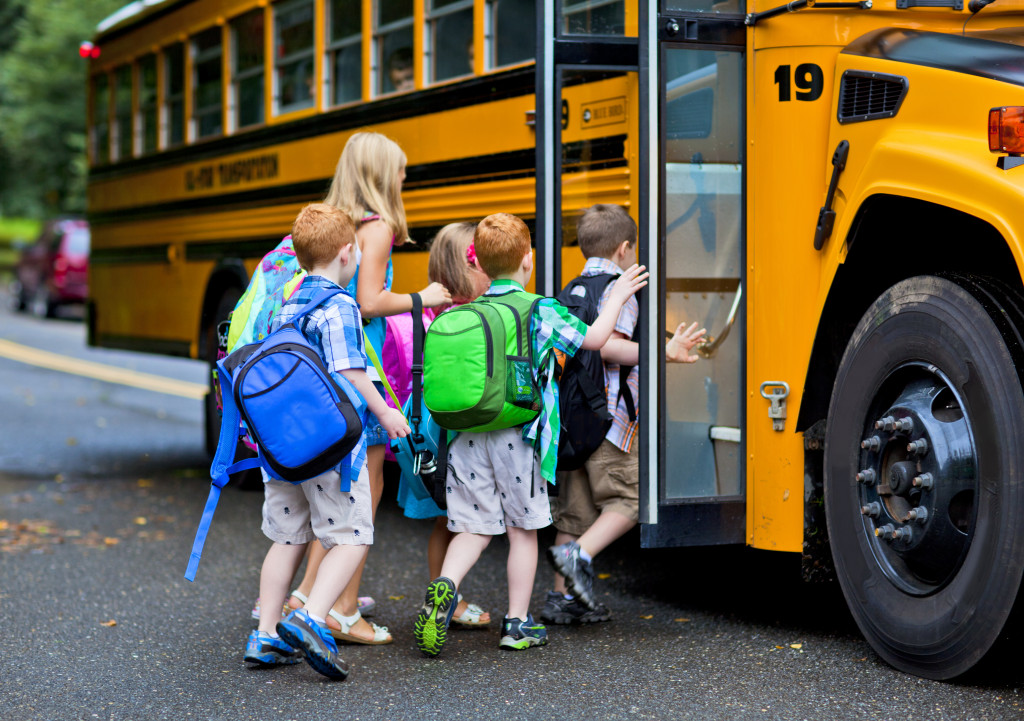• Educating everyone about safety protocols like stranger danger, basic self-defense, cyber safety, and the buddy system helps create safe spaces.
• Designating certain town areas as “safe zones” with elements like lighting, security cameras, and patrol services helps reduce risk.
• Engaging with local law enforcement and forming a community response plan can help build trust between citizens and police officers.
• By working together, parents and their children can feel more at ease knowing their safety is being taken seriously.
Local communities are vital in ensuring children’s safety in public spaces. According to UNICEF, when parents, schools, and community organizations come together to create safe spaces for children in public areas, it encourages physical activity and fosters a sense of belonging. While each community will have unique needs and considerations, there are some common ways to create safe public spaces so children can flourish. Explore how local communities can ensure children’s safety in public areas below.
1. Educating Parents and Children
To keep children safe, educating parents and their kids on safety protocols is important. Many communities offer informational workshops or seminars for parents on the basics of child safety. Additionally, educating kids about their rights and how to respond if they feel in danger can go a long way toward creating safe public spaces.
a. Stranger danger
One of the critical safety protocols to teach children is “stranger danger”—in other words, how to recognize when someone may be a threat and how to stay away. Through role-play, games, and other activities, kids can learn the basics of stranger danger in a fun and engaging way.
b. Basic self-defense
In some cases, teaching kids basic self-defense techniques can act as an additional layer of protection. Training in martial arts or self-defense classes can equip children with the necessary skills to protect themselves.
c. Cyber safety
Cyber safety is a critical component of keeping kids safe. Educating children on the risks of using the internet and helpful tips on how to stay safe online can help them navigate the digital world more safely.

d. Buddy system
Another key safety strategy is teaching kids to use the buddy system when out. Having a trusted friend with them can help give children an added layer of security and reduce the chances of something bad happening.
2. Creating Safe Zones
Designating certain areas of the town as “safe zones” is another effective way to reduce risk and promote a sense of security among children in public spaces. Such zones might include parks or recreational areas where adults are always present. Additionally, establishing programs like Neighborhood Watch or providing resources like emergency call boxes or panic buttons can give a feeling of security to adults and children alike in these safe zones.
Of course, local governments must construct these spaces for everyone’s safety. Working with reliable construction companies is key to ensuring the job is done correctly and compliant with industry standards. They can consult on the project’s appropriate materials, resources, and building codes. Some of the most essential elements to consider when designing these safe spaces are lighting, security cameras, and patrol services.

3. Engaging with Local Law Enforcement
Local law enforcement should also be engaged when ensuring the safety of children in public spaces. Establishing strong relationships between citizens and police officers can help create an environment where everyone feels secure. They can offer support and resources to the community and maintain a visible presence in public places.
Furthermore, law enforcement officials should be actively involved in educational initiatives that teach parents and children about safety measures they can take when out in public. This type of collaboration helps build trust between citizens and police officers while also promoting an understanding of what it takes to keep kids safe from harm.
4. Forming a Community Response Plan
As part of their efforts to create safe public spaces, communities should also come up with an action plan that outlines how they will respond if an emergency arises. This plan should outline the roles and responsibilities of each organization, as well as a set of protocols that everyone can follow in the event of an emergency.
A clear plan will help ensure that everyone is prepared and able to respond quickly and effectively in an emergency. Some of the elements that should be included in this plan might include contact information for local law enforcement, a list of resources available to those in need, and details about any public safety programs that have been established in the area.
Creating safe public spaces for kids is an essential responsibility that local communities must undertake for future generations to grow up healthy, happy, and secure. By educating both parents and their children on basic safety protocols, designating certain areas as “safe zones” within the town, engaging with local law enforcement, and forming a community response plan, local communities can make public spaces safer for children. Ultimately, by working together to create safe environments, both parents and their kids can feel more at ease knowing that their safety is being taken seriously.


